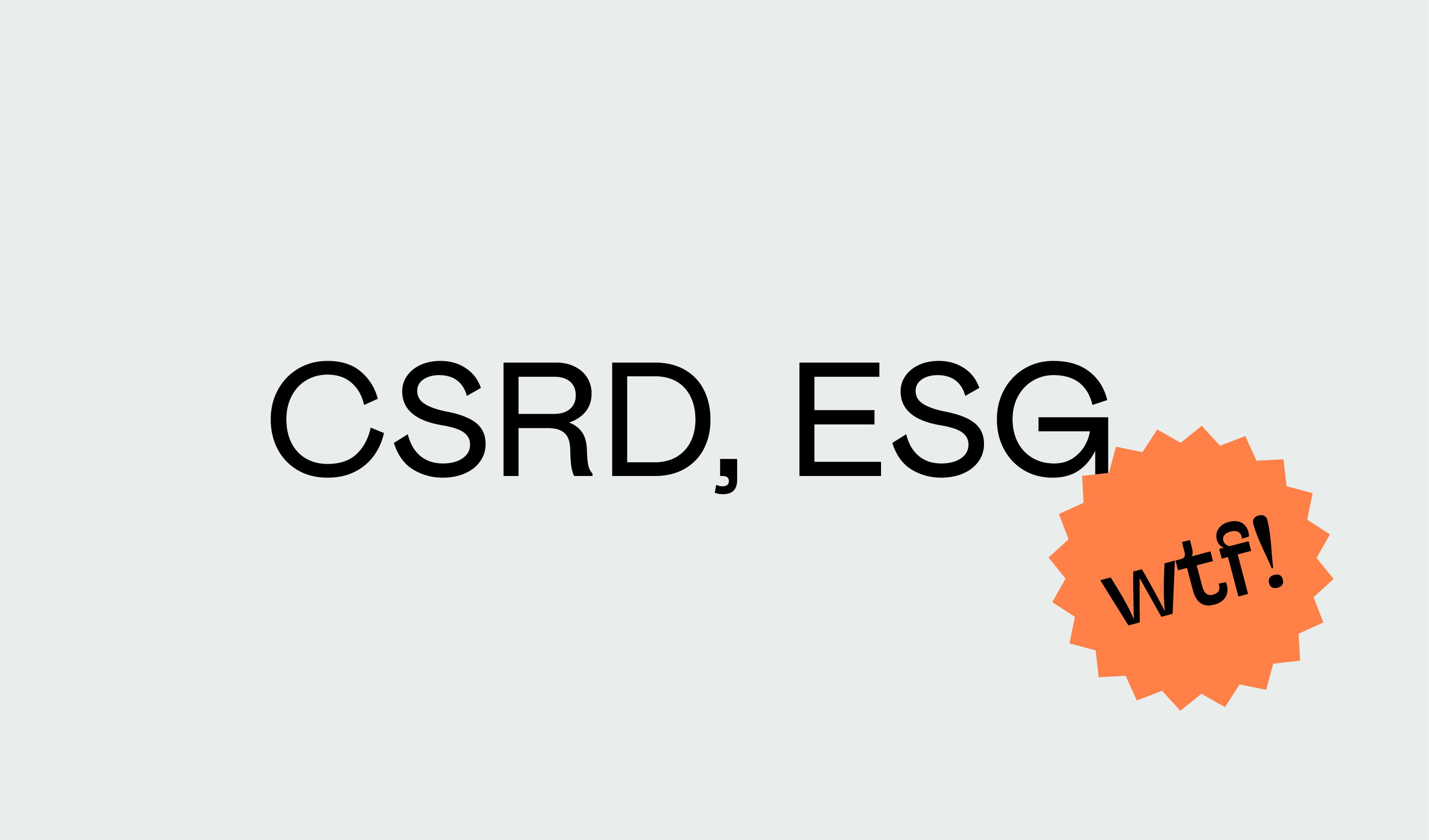Marit Filger – 9. March 2024
Business, Re.Frame
Corporate sustainability is subject to more and more guidelines – and we think that’s a good thing! At the same time, the criteria behind the abbreviations CSRD and ESG are not always easy to understand. How can we overcome this confusion and put the criteria into practice? In our three-part Insights series, we ensure that you get an overview and a good understanding of each topic.

What we’re talking about: CSRD
With the Corporate Sustainability Reporting Directive (CSRD), the EU is getting serious. After the European Commission published its proposal for the directive in April 2021, the negotiators from the Commission, the Council and the European Parliament agreed on a compromise on June 21, 2022. This was adopted by the European Parliament as well as the Council and published in the Official Journal of the European Union on December 16, 2022. The directive came into force on January 5, 2023 and the new regulations must be implemented by the member states within 18 months.
What does this mean? From now on, companies will have to report more comprehensively and according to more uniform standards. And: sustainability reporting will be audited externally, just like financial reporting. The EU Commission has defined auditing standards for this, which are to be gradually expanded over time.
As a side note: Even if your organization is not a reporting company, you should observe the CSRD guidelines. Customers are becoming increasingly aware and are demanding more transparency and clear communication of all sustainability efforts. All companies that engage in CSRD can only benefit from this. But does that also mean that we all have to be experts? No, fortunately not, I was relieved too. At Re.Frame Studio, we are all interested, but the experts are mainly Annika Degen and Tanja Hildebrandt. Tanja will be publishing a detailed article on all CSRD-related specifics shortly. Be sure to read it!
So what is ESG?
The abbreviation ESG stands for Environment, Social and Governance. These three areas are the basis for assessing a company’s sustainability performance. Put even more simply: this is where we find the answer to the question ‘What can we do in the company to become more sustainable? ESG is therefore the core of your organization’s sustainability strategy.
Is that a long list of criteria? Yes – thank goodness! Do you have to memorize and understand them all? No – and I was briefly relieved here too. Annika, our sustainability consultant at Re.Frame Studio, explained to me that – as with many other topics – there are the obvious points at the beginner level and then the challenging niche topics for the more advanced. So the initial objective is “progress not perfection”, and that at least gave me the right mindset to start engaging myself in the topic. With Annika’s expertise, Re.Frame Studio is currently developing a 1.5-hour workshop in which you can make a concrete statement about the status of your ESG efforts – and you can then continue building on the status quo. So a really good, low-barrier introduction to the topic of ESG. Additionally, diving deeper, there will be an article written by Tanja which will be published soon. That will be the third and final blogpost in our series. And again: Be sure to read it!
Let’s get to it
Before you hire a sustainability manager and tackle the big investments, you should start with this step: Read our two Insights articles that we will be publishing very soon. One deals with the CSRD guidelines and the other with the ESG criteria. Both articles will give you a comprehensive understanding and clear ideas for implementation.
You can’t wait and want to get started right away? Then book a workshop with us! We will be happy to advise you on the best format for your organization. Contact us for details! ->